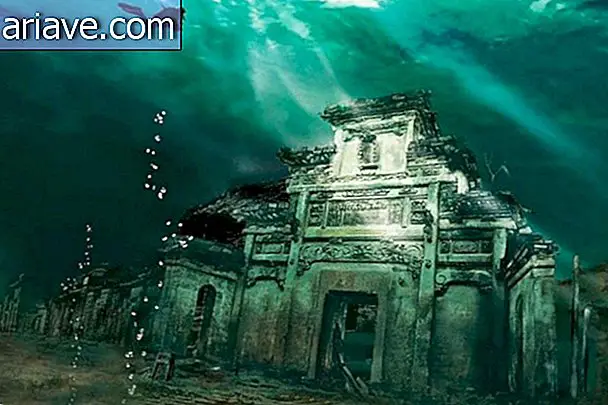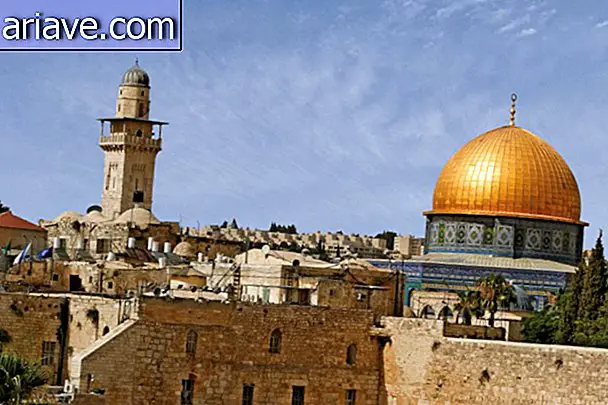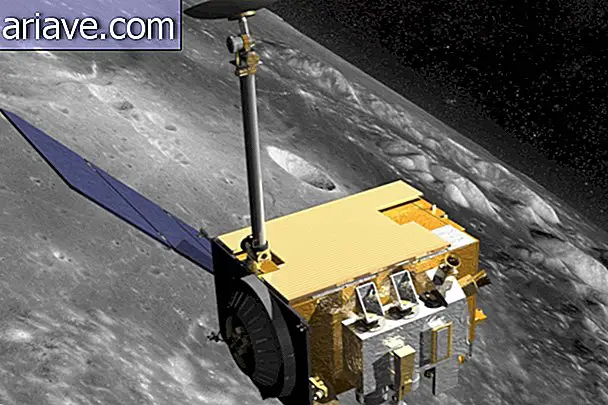Next stop: Mexico - Arriba! Travel the country of Mayan and tequila
Under the blessings of Our Lady of Guadalupe, Mexico is a happy country with a lot of history to tell. Of course, the Mexican people are also facing many difficulties in the economy, politics, and other common problems of developing countries, but all of this still does not detract from a beautiful and rich territory.
Mexico is part of North America and has an estimated population of 118 million. The country borders the United States, which generates many illegal attempts at immigration by Mexicans brokered by so-called “coyotes” who charge fortunes to move people across the border without guaranteeing that they will actually reach their destination.
In any case, this is one of the challenges facing the country for many years and is far from over. But the Next Stop is there to talk much more about the beautiful and positive side of the countries of the world. So, let's start our journey through the country of tequila, ancient civilizations, pepper, paradise beaches and so many other amazing attractions? So grab a sombrero, a margarita and get in the mood with us!
1 - A little bit of history

About 2, 600 years before Christ, the Mayans formed one of the first Mesoamerican civilizations of history in Mexican territory. These people built most of their large cities between the years 250 and 900 after Christ, when they reached their highest state of development.
The Mayan civilization survived for centuries, but gradually dissipated when the Olmecs already existed and were influenced by it. The latter gained more force with the end of Mayan society, occupying a fairly large territory of Mexico, close to where the states of Veracruz and Tabasco are today.
The Aztecs are the youngest of the civilizations that inhabited Mexico. They were a northern tribe and assumed power after 1200 AD. The Aztecs were an indigenous people belonging to the Nahua group and were also called mexicas - a name used to refer to the inhabitants of the heart of the Aztec empire, the Valley of Mexico.

The Aztecs founded their largest city, Tenochtitlan, in the year 1, 325, and it was built on an island in a Mexican lake called Texcoco. It was in this very place where the current city of Mexico was built.
In the early 16th century, the Spanish landed in the country and began colonization. Unfortunately, with them came smallpox, a disease that annihilated thousands of Aztecs. On September 16, 1810, the country's independence from Spain was declared by Father Miguel Hidalgo y Costilla. In 1823, the United Mexican States were established, the official name of the country to this day.
2 - Culture and religion

Mexico's culture has undergone a tremendous transformation over the last decades and it varies widely across the country. Almost half of the population currently lives in cities, but smaller rural communities continue to play an important role in the country's culture with their customs and agriculture.
Mexico's cultural richness is immense, blending the traditions derived from indigenous peoples who were successors of pre-Hispanic societies - which in turn also influence customs today. Arts, architecture, music (such as Mariachis), folklore (dances) and a great appreciation for very festive family reunions are just some of the strengths in Mexican culture.
As far as religion is concerned, almost 90% of Mexicans identify themselves as Catholic, although many have incorporated pre-Hispanic Mayan elements as part of their faith. The rest of the population identify themselves as Protestant, Presbyterian, Jehovah's Witness, Adventist, Lutheran, Methodist, Baptist, and Anglican. There are also small communities of Muslims, Jews and Buddhists.

The Feast of Our Lady of Guadalupe (the country's patron saint), which is celebrated on December 12, is one of the most famous. Day of the Dead, which is actually celebrated on two days (November 1st and 2nd), combines Catholic traditions with indigenous ceremonies to honor the deceased.
Another well-known festival there is the Cinco de Mayo, commemoration that marks the military victory of the Mexicans over the French in 1862.
3 - Historic Cities

Starting with Mexico City itself, you can be enchanted by the many points that tell the history of the country. In the historic center of the city are the Constitution Square, the Metropolitan Cathedral, the National Palace, the Mayor Museum and Temple, and the Guadalupe Basilica.
Still in Mexico City, you can visit the Coyoacán neighborhood, where important Mexican art personalities like Frida Kahlo and Diego Rivera lived.
When it comes to cities built by the Mayan and Aztec civilizations, one of the largest complexes can be found just 48 kilometers from Mexico City, in Teotihuacán. This is where many of the most significant pyramids built in pre-Columbian America, as well as their well-preserved residential complexes, Avenue of the Dead, columns and murals.

The archaeological complexes of Palenque and Merida also hold good surprises. Both sites have been declared a World Heritage Site by UNESCO and hold several pre-Columbian buildings.
However, one of the most visited places is the Mayan archeological city of Chichén Itzá, which is located in the Mexican state of Yucatán . In this place is the famous Kukulcan Temple, which receives thousands of tourists all year round.
4 - Paradise

The Mexican coast is a separate chapter, both the Atlantic Ocean and the Pacific Ocean. It is formed by beaches and paradise islands, with clear waters, white sand and many natural beauties. The highlights are the famous city of Cancun (with its 22 kilometers of incredible beaches), the Mayan Riviera, Cabo San Lucas, Acapulco and Cozumel Island.
5 - The tequila!

Arriba, abajo, the center ya inside !! And give her tequila! Who never made that toast with tequila shots (and spent the next morning regretting it)? The iconic drink of Mexico is known all over the world and can be taken pure or in various cocktails. One of the most famous drinks is Margarita, which is prepared with tequila, lemon juice, salt, liqueur and ice.
In some places in Mexico, the real male may send tequila in its most rustic form, called Mezcal, which is to be drunk with the famous larva as part of the traditions.

Tequila is produced with the extract of a plant called blue agave. It grows in desert environments, right in the climate of central Mexico. The drink gets its name because it is primarily distilled in the region of the city of Tequila, in the Mexican state of Jalisco.
As many people know, and others will find out after a huge hangover, tequila has a high alcohol content, being 38 to 40% on average. Therefore, it is good to appreciate it in moderation. Watch out for mariachi tequileiro!
6 - Gastronomy

Who is a fan of Mexican food there? Touted as one of the most famous cuisines in the world, Mexican cuisine has even earned a UNESCO World Heritage title. The taste of the dishes of this country conquered not only the Americans, but also Brazil and several other countries.
Mexican cuisine has influences from ancient civilizations, but gained strength with the customs brought by Europeans, resulting in an excellent mix. Corn is one of the most used ingredients, being present in tortillas, tamales and various other dishes.

Avocado is also widely used in both famous guacamole and other preparations. Also, let us not forget the peppers, which traditionally warm up Mexican dishes in a delicious way.
Our well-known beans also have a big influence on Mexican dishes, as well as beef and chicken. Among the most famous recipes of Mexican cuisine are fajitas, burritos, nachos, chilli (ground beef with beans), quesadillas, tamales, tacos, enchillada and many other delights.
8 - More curiosities

- The famous Mexican children's series “Chaves” ( El Chavo del Ocho ) was aired from May 1972 to December 1978, and has been replayed to this day in many countries, including Brazil, where it was a great success;
- As in Brazil, soap operas are like a Mexican “cultural heritage”. Among the best known of Brazilians are Rebel, The Usurper, Maria do Bairro and Carrousel;
- Mexico was one of the first countries to introduce chocolate, corn and pepper to the world;
- The National University of Mexico was founded in 1, 551 by Carlos V of Spain and is the oldest university in North America;
- Mexico is second only to Brazil in the number of Catholic citizens;
- Mexican children do not receive gifts on Christmas Day. They receive gifts on January 6, the day of Kings;
- The Mexican flag is made up of three vertical banners. The green stripe symbolizes hope, while the middle white stripe represents purity and the red stripe represents the blood of the Mexican people. The image of an eagle eating a snake is based on an Aztec legend;
- The Chihuahua is the smallest dog in the world and the name of a Mexican state;
- Mexico City is the oldest in North America. It is also one of the largest cities in the world;
- Modern Mexicans are a unique blend of many ancient civilizations, including Olmec, Zapotec, Toltec, Mayan, Aztec, Inca, African, French, and Spanish.
* * *
Like many countries presented here at the Next Parade, it is virtually impossible to put all the qualities, beauties and curiosities of Mexico in one article. But in any case, we hope you have enjoyed what we have shown about this country so rich in its landscapes, its people, its cuisine and its culture. To the next!
* Originally posted on 30/05/2014.
***
Do you know the Mega Curioso newsletter? Weekly, we produce exclusive content for lovers of the biggest curiosities and bizarres of this big world! Register your email and do not miss this way to keep in touch!











